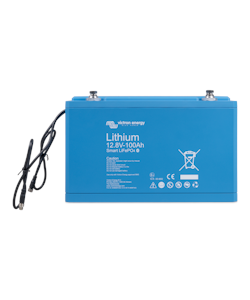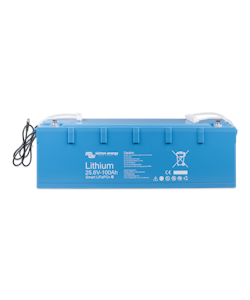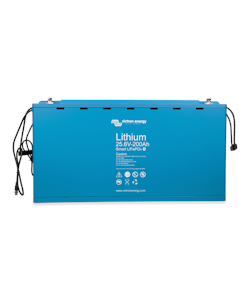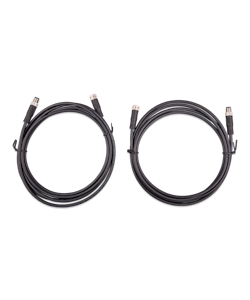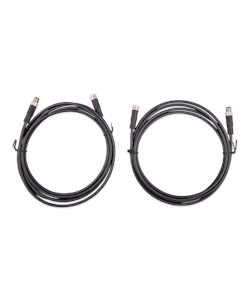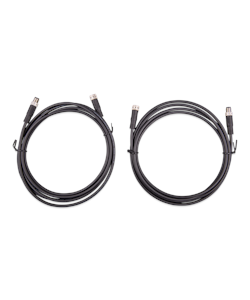Lithium iron phosphate (LiFePO4 or LFP) is the safest when it comes to common Li-ion battery types. The normal voltage in an LFP cell is 3.2 V (lead-acid: 2 V/cell). A 12.8 V LFP battery therefore consists of 4 cells connected in series and a 25.6 V battery which consists of 8 cells also connected in series.
In several applications (especially off-grid solar and/or wind farms) energy efficiency can be of decisive importance. Round-trip efficiency (discharge from 100% to 0% and back to 100% charge) of the average lead-acid battery is 80%. The equivalent for an LFP battery is 92%. The charging process of lead-acid batteries becomes particularly inefficient once the 80% state of charge is reached, resulting in 50% efficiency or even less in solar systems where several days of reserve energy are required (battery time at 70% to 100% state of charge). However, an LFP battery will still achieve 90% efficiency under shallow discharge conditions. Size and weight Saves up to 70% in space Saves up to 70% in weight.
An LFP battery does not need to be fully charged. Operating life is actually improved if it is partially charged instead of fully charged. This is a major advantage of an LFP compared to a lead-acid battery. Other benefits include wide operating temperature ranges, excellent cycling performance, low internal resistance and high efficiency.
Our LFP batteries have integrated cell balance and cell monitoring systems. Up to 5 batteries can be connected in parallel and up to four 12 V batteries or two 24 V batteries can be connected in series to assemble a 48 V battery bank of up to 1500 Ah. The cell balance/monitor cables can be daisy-chained and must be connected to the Battery Management System (BMS).
Beställningsvara
